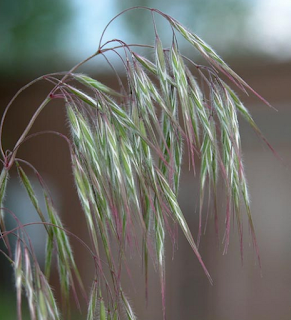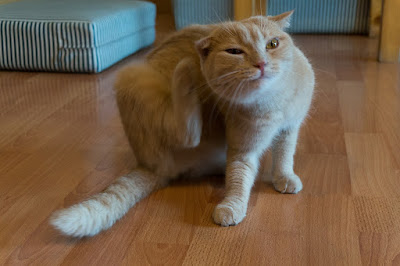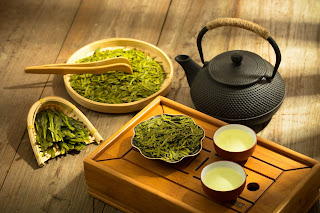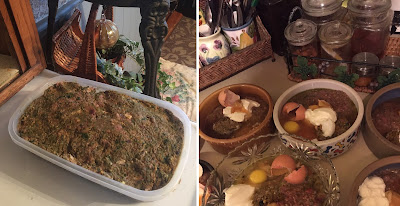Ear Infections in Dogs and Cats, Causes, Symptoms and Natural Herbal Treatments and Remedies
Ear Infections in Dogs, Cats
A Guide to Natural Treatments and Remedies
★ 17.5 min readA Guide to Natural Treatments and Remedies
In this article:
- Does Your Dog or Cat Experience These Ear Issues?
- Causes and Types of Ear Infections
- Acute Ear Infections
- Chronic Infections
- Ear Mite Infestations
- Foxtails
- Other Causes of Ear Infections
- Aural Hematomas
- Other Causes
- Symptoms of an Ear Infections
- Why Conventional Antibiotics Are Not a Solution
- Prescription Dog Food and Cat Food is NOT a Solution
- A Natural Strategic Approach is the Solution
- Natural Topical Treatments and Remedies
- How to Administer Ear Drops, Ear Flushes
- Do This To Avoid Causing Discomfort
- Do This Immediately After Administering Ear Drops or Ear Flush
- Number of Applications Per Day
- Yeast Infections - Number of Drops Per Day
- Bacterial Infections - Number of Drops Per Day
- How To Store Ear Drops and Ear Flushes
- Natural Ear Drops To Treat Ear Infections and Ear Mite Infestations
-
Apple Cider Vinegar Ear Drop Recipe
-
Calendula Ear Drop Recipe
-
Garlic Oil Ear Drop Recipe
- Colloidal Silver Ear Drops
- Oregon Grape Ear Drop Recipe
- Ear Cleansing Recipes for Regular Maintenance of Healthy Ears
Support Your Dog and Cat’s Health from the Inside Out
A Species Inappropriate Diet vs. A Species Appropriate Diet
Food Hypersensitivities (intolerance and allergies)
Avoid Making These Major Personal Care Mistakes
How Long Will It take To Remedy The Infection?
1.0 Does Your Dog or Cat Experience These Ear Issues?
Does your dog or cat experience ear discomfort, dirty inner ear flaps, ear discharge, or frequent ear infections?
Did you know that ear infections are the most common, non-life-threatening reason for a visit to the veterinarian’s office?
However, a conventional approach e.g. conventional antibiotics, anti-fungal medications and steroids:
- Do not resolve the underlying root cause of the infection.
- Typically will result in an aggressive return of symptoms.
- All too often results in a cascade of additional health issues.
So, what can you do to prevent and treat ear infections?
Treat the symptoms and remedy the root cause with an appropriate natural protocol.
How?
2.0 Causes and Types of Ear
Infections
There are many reasons why your dog
or cat experience ear infectionw. The list below will provide you with an overview
of types of ear infections and causes.
Before we look at the list of
cause and type it is important to note that if your dog or cat is on a diet
that truly and fully supports a strong immune system and good overall health
the risk of acquiring any type of ear infection dramatically
decreases.
The root cause of most illness experienced by dogs and cats is:
- Species inappropriate diets.
- Toxic personal care protocols.
- Exposure to other environmental toxins.
The risk of acquired health issues and conditions is significantly reduced when your dog and and cat are:
- On a species appropriate diet.
- Have a natural personal care protocol.
2.1 Acute Ear Infections
This type of infection can be
caused by:
- Bacteria which thrives in a humid environment – the inside of the ear canal.
- A
scratch or cut inside or near the ear canal that becomes populated with
bacteria.
- A predisposition to ear infections.
- Its important to note that dogs with floppy ears may be particularly prone to ear infections as air circulation inside the ear is restricted. As well, fur on the ear flap can become overgrown, dirt and particulate can become trapped in the fur.
- It is important to check your dog and cat’s ears on a regular basis.
If you have a puppy or kitten make
sure you get her accustomed to having her ears touched. This will help prevent behavioral issues (e.g. bite reactivity) around the touching of her ears later in life.
Go to this
article for tips to avoid stressing your dog and cat during grooming, e.g. ear cleaning, brushing fur
and teeth to bathing and nail clipping, etc.
2.2 Chronic Ear Infections
This type of infection can be
caused by:
When hypersensitivities are not properly addressed symptoms of yeast (e.g. candida albicans) overgrowth can occur resulting in candidiasis (yeast infection). Candida microbes are naturally present in the gut and on the skin. However when the natural balance of microbes is disrupted by exposure to inappropriate substances (see below) yeast overgrowth can occur.
To learn more about food hypersensitivities (intolerance and allergies), go to this article.
Your dog and cat may be exposed to inappropriate substances from multiple sources including:
To learn more about food hypersensitivities (intolerance and allergies), go to this article.
Your dog and cat may be exposed to inappropriate substances from multiple sources including:
- Pet food diets and treats.
- Veterinary prescription diets and treats.
- Dog and cat health care products such as dental chews, toothpaste, shampoos and rinses, off the shelf and veterinarian prescribed conventional insect and parasite preventatives, etc.
Other Common Causes Include:
- Conventional antibiotics.
- Other conventional medications.
- Inoculations.
- Chronic bacterial infection.
- Hormonal unbalance.
- Stress.
- Suppressed immune system (enables fungal and bacterial infections).
2.3 Ear Mite Infestations
Ear mites are tiny spider-like
insects that like to infest the ears of dogs, cats, rabbits and other small
animals. Although mites prefer the ear canals they can also live elsewhere on
the animal’s body. Mites thrive in the moist warmth of the ear canal. They
burrow into the ear, casing irritation and inflammation. The animal’s body
responds to the attack by producing excess ear-wax. Ear mites feed on
epidermal debris and ear wax.
Learn more about:
- Ear mite infestations.
- Natural treatments and remedies.
Go to this article.
2.4 Foxtails
Some types of wild grass produce a
seed with sharp points and microscopic barbs. These seed heads are called 'foxtails'.
Your dog or cat (more common for dogs) can get one or more fox tails lodged in her ear, paw, (or other part of her body) as she runs through, plays or rolls-about in foxtail grasses.
The foxtail barbs can work their way into flesh. The barbs prevent the seed
head from working its way back out. If the embedded foxtail is not removed from your dog (or cat's) ear, the ear can become irritated, painful and infected. The foxtail can also travel through the skin an make it's way to other parts of the body, resulting in serious issues.
If you suspect your dog (or cat) may have an embedded foxtail, your animal should be examined by your veterinarian ASAP.
2.4.1 Examples of Foxtail Grasses
Cheat Grass (bromus tectorum)
2.5 Other Causes of Ear Infections
Other
foreign material. Organic and non-organic substances can become lodged in your dog or cat’s
ear flap and ear canal.
Particulate
blowing about in the wind can impact and lodge into the ear canal. This can
occur when for example a dog sticks her head out the window of a quickly
moving vehicle.
Plucking fur from the ear should be avoided. Plucking can cause irritation, inflammation and lead to infections.
Plucking fur from the ear should be avoided. Plucking can cause irritation, inflammation and lead to infections.
3.0 Symptoms of Ear Infections
Symptoms of an ear
infection include:
- Build-up of ear wax.
- Once the ear has been cleaned the wax builds up again.
- Ear sensitivity and pain.
- Your dog or cat may turn her head away if you try to touch her ears or may cry in pain at your touch.
- Dizziness and/or vomiting.
- Tilted head.
- Inflammation red inflamed skin, swelling) of the ear flap and ear canal skin.
- Scratching at the ear (repeatedly, excessively, persistently).
- Shaking of the head (repeatedly).
- Strong odor emanating from the ear.
- Aural hematomas.
3.1 Aural Hematomas
 |
Aural Hematomas occur when constant
irritation from scratching and head shaking break blood vessels resulting
in an accumulation of blood between the layers of skin.
This condition creates a large blister-like pocket.
The conventional treatment for aural hematomas include:
- A surgical procedure can be done in which the skin is cut and the blister completely drained. However the hematoma may refill with blood post surgery. As well, if the root cause of the yeast overgrowth is not addressed, there is a high risk of hematoma occurrence.
- Less intrusive procedures such as draining the blister with a needle or small tube can also be done. However the blister will usually refill with blood in a matter of hours or days.
A natural protocol tailored to suit the individual dog's circumstances can successfully treat and remedy a hematoma.
4.0 Why Conventional Antibiotics Are Not a Solution
4.1 A Health Damaging Approach
Many veterinarians prescribe conventional antibiotics to 'treat' ear
infections. However, conventional antibiotics have many adverse side effects. The side effects include minor to major short and long-term health issues. For example:
- Antibiotic resistant bacteria (e.g. MRSA infection).
- Gut biome disruption and damage.
- Gastrointestinal issues such as acid reflux, diarrhea, vomiting.
- Joint issues.
- Liver issues.
- Lymph node issues.
- Skin issues.
- Ulcers.
- Yeast infections.
- etc.
A comprehensive natural treatment protocol tailored to suit your animal's requirements can resolve the infection without causing adverse side effects.
If the root cause of the infection
is candida overgrowth, use of conventional antibiotics:
- Will not address the root cause of the infection.
- Temporarily suppresses symptoms, which return after the course of antibiotics is finished.
- Repeated use of conventional antibiotics make the infection increasingly difficult to get under control.
Over prescription leads to
additional adverse health impacts.
How does this happen? There are
multiple contributing factors.
.1 Antibiotic Resistant Microbes
Bacteria are highly adaptable
microorganisms and overtime and exposure to repeated doses of antibiotics
bacteria mutate in order to adapt and survive. When your dog or cat is repeatedly exposed to conventional antibiotics the bacteria that they are hosting, undergo an adaption process. Each time adaption occurs, immunity to a specific antibiotic is created. The more
the bacteria adapt the better they get at adapting. Once bacteria have adapted
to a series of antibiotics, the antibiotics are no longer effective. If your dog or cat ends up in a truly life
threatening situation where antibiotics are required to save your dog or cat's life, your animal’s life is in great jeopardy.
.2 Heightened Risk of Antibiotic Resistant Microbes
Animals raised on factory
farms (concentrated animal feeding operations – CAFO) are fed food that
includes antibiotics.
When the farm animal is slaughtered, the antibiotics remain in the
flesh of the animal.
If your dog or cat is on a diet
that includes animal protein, bone and fat sourced from factory farm raised animals, your dog and cat are ingesting the conventional antibiotics that were administered to the farm animals.
If your animal is also taking antibiotics prescribed by a veterinarian, the risk of adverse sie effects increases.
.3 Antibiotics Kill Bad Bacteria and Good Bacteria
Antibiotics destroy both good and
bad bacteria in the gastrointestinal tract (GI Tract). The destruction of good
bacteria causes a suppression of the immune system, increasing your animal's risk of bacterial infections, fungal infections, parasites, and viruses
The GI tract is also the body’s major centre for serotonin
production. The death of good gut microbes has a negative impact on serotonin levels.
This can result in a heightening of anxiety and stress.
Administration of antibiotics can cause a worsening of ear infections.
.4 Root Cause Remains Unaddressed
In addition to placing your dog and cat’s health at risk, the root cause of the infection is not identified or addressed. This further increases the risk that the infection will return with a vengeance.
5.0 Prescription Dog Food and Cat Food is NOT a Solution
When ear infections are a result of food hypersensitivities (food intolerance, 'allergies') two actions must be taken:
- The immediate symptoms of the ear infection must be treated, and;
- Your animal's diet needs to be changed or adjusted as applicable.
Dry pet food, and canned pet food veterinary prescription diets DON'T address root cause. Prescription pet food diets contain multiple allergens, toxins and other inflammation-causing components. This includes so called 'anti-allergen' or 'limited ingredient' prescription diets.
Prescription pet food is 'scientifically designed' to mask immediate symptoms. These products do NOT treat and remedy root cause, and do not support overall health and well-being. They are health disrupting and health destroying.
To properly address the immediate infection and support long-term health your dog and cat need to be transitioned to a species appropriate raw or gently cooked diet properly designed to suit their personal circumstances.
To learn more about the problems caused by veterinary prescription pet food diets, go to this article this article.
*food intolerance, allergies
6.0 A Natural Strategic Approach Is The Solution
The best solution
to treating and resolving ear infections is a comprehensive natural treatment protocol:
- Topically treat the immediate symptoms of the ear infection to soothe inflamed, irritated skin, cleanse and bacteria, fungus or debris as required..
- Provide ingested herbal and nutraceutical treatment to assist the body in cleansing itself of the infection.
- Remedy the
root cause of the ear infection. For example, if the ear infection is a result of food hypersensitivities, change the diet.
- Ongoing maintenance - put a protocol in-place to check and clean the ears on a regular (i.e. weekly, bi weekly) basis.
7.0 Natural Topical Treatments and Remedies for Ear Infections
7.1 How To Administer Natural Ear Drops, Ear Flushes
The following is a general guideline for administering natural ear drops and ear flushes (ear cleanses) provided in this article.
If your dog or cat has a:
- Perforated ear drum do NOT administer drops into your animal's ear canal.
- Hypersensitivity (intolerance or allergy) to any of the ingredients used in an ear drop or flush recipe, do not use it, Choose one of the other recipes instead.
.1 Do This To Avoid Causing Discomfort
Make
sure the liquid solution being dropped into or applied to your dog or cat's ear is room temperature.
- If the liquid is cold it can cause discomfort.
- If the liquid is too hot you can cause discomfort and damage.
If you need to warm the solution to room temperature:
- Place the liquid solution into a vial, dropper, or small glass bowl.
- Sit the vial, dropper, glass or bowl in a larger vessel (glass or bowl) with a little warm water to warm the solution up.
.2 Do This Immediately After Administering Ear Drops, Ear Cleanse
- Gently
rub, massage the base of your animal's ear in a circular motion. Then remove your hand and let
your dog or cat shake her head.
- Then use a cotton or bamboo pad to gently wipe any excess liquid solution from the ear.
.3 Number of Applications Per Day
- When treating an active ear infection use ear drops when required 2x to 3x per day.
- When improvement is seen reduce use to 1x to 2x per day.
- When the infection appears to be resolved, continue to use the treatment 1x per day, 1x to 2x per week for one to two weeks. Then stop use.
- When completely resolved, use only when needed for occasional maintenance cleaning.
.4 Yeast Infections - Number of Drops To Administer
When treating a yeast (fungal) infection less is more.
Keep in mind that yeast thrives in a damp, moist environment. The more moisture trapped in the ear canal, the better the growing conditions for yeast.
When dealing with a yeast infection the primary intervention is an internal one - fix the diet to resolve the infection.
Use one of the drop recipes to disinfect, soothe and clean around the inner ear flap and entrance to the ear canal.
Administer drops to the ear canal only when absolutely necessary, and do not administer an excessive number of drops.
Topical Ear Drop Dosage for Yeast (Fungal) Ear Infections
Cats
Administer 1 to 2 drops in the ear canal.
X-Small Dogs
Administer 1 to 2 drops in the ear canal.
Small Dogs
Administer 1 to 3 drops in the ear canal.
Medium Size Dogs
Administer 3 to 5 drops in the ear canal.
Large Size Dogs
Administer 5 to 6 drops in the ear canal.
Administer 5 to 6 drops in the ear canal.
.5 Bacterial Infections - Number of Drops to Administer
X-Small Dogs
Administer 2 to 3 drops in the ear canal.
Small Dogs
Administer 3 or 4 drops in the ear canal.
Medium Size Dogs
Administer 4 to 6 drops.
Large Size Dogs
Administer 6 to 10 drops.
.6 How To Store Ear Drops and Ear Flushes
- Pour remedy into a sterilized glass bottle or glass eye dropper bottle, secure cap.
- Store the remedy in the refrigerator.
7.2 Natural Ear Drop Recipes to Treat Ear Infections and Ear Mite Infestation
In this
section:
-
Apple Cider Vinegar Ear Drop Recipe
-
Calendula Ear Drop Recipe
-
Garlic Oil Ear Drop Recipe
- Colloidal Silver Ear Drops
- Oregon Grape Ear Drop Recipe
7.2.1
Apple Cider Vinegar Ear Drop Recipe
ACV can be helpful for treating bacterial infections.
ACV should NEVER be use for fungal (yeast) infections.
If your animal's skin is inflamed, scratched or otherwise broken do not use this recipe, choose one of the other recipes instead.
Don’t use pasteurized apple cider vinegar.
Do use organic, unpasteurized, unfiltered apple cider vinegar.
Pasteurized vinegar does NOT have the medicinal properties present in organic
unpasteurized, unfiltered ACV.
Organic Apple Cider Vinegar (ACV) has anti-bacteria properties (primarily from the acetic acid and malic
acid in ACV).
As well, pasteurized ACV is high in pesticide residue. Much of the
pasteurized non-organic ACV produced in North America is made from apples
imported from China. These imported apples are heavily contaminated with toxic
pesticides, herbicid, fungicides and synthetic fertilizers.
Pesticide and herbicide application in China is poorly if not completely
unregulated in many regions.
Apple Cider Vinegar ear drops can be used to help:
- Keep ears clean.
- Treat bacterial infections of the ear.
Preparation
- Combine equal parts of ACV and distilled water, mix the solution.
- Use a syringe or dropper to administer the drops to your animal's ear canal.
- Make sure the syringe or dropper is positioned above the ear canal, not placed within or touching the ear canal.
- At the base of the ear, gently rub, massage the ear in a circular motion, then remove your hand and let your animal shake her head.
- Gently wipe away any excess fluid.
- You can also use the ACV solution to gently swab clean the inner ear flap.
Learn more about using apple cider vinegar for your dog and cat:
- Heath supporting properties.
- How and when to use as a nutritive or ingested treatment.
- More ACV personal care treatment.
Go to this article.
7.2.2 Calendula Ear Drop Recipe
Calendula flower is a broad spectrum anti-bacterial, anti-fungal, anti-microbial, anti-inflammatory, astringent, antiseptic, calming, demulcent and analgesic.
Calendula ear drops can be used to help:
- Keep ears clean.
- Soothe inflamed, irritated skin on ear flaps.
- Treat bacterial or fungal infections of the ear.
Preparation
Combine the following in a glass:
- 1 cup warm distilled or filtered water.
- 1 teaspoon calendula tincture.
- 1/2 teaspoon sea salt or Himalayan pink salt.
Instructions for Use
- Use a syringe or dropper to administer the drops to your animal's ear canal.
- Make sure the syringe or dropper is positioned above the ear canal, not placed within or touching the ear canal.
- At the base of the ear, gently rub, massage the ear in a circular motion, then remove your hand and let your animal shake her head.
- Gently wipe away any excess fluid.
- You can also use the Calendula solution to gently swab clean the inner ear flap.
This ear drop or flush may also be expanded to include several drops of Meadow Anemone
(Pulsatilla nigricans) tincture.
Garlic is a natural
broad-spectrum antibiotic. The active antibiotic agent in garlic is allicin (a
sulfur compound). Allicin is produced when garlic is chopped, chewed or
bruised. Garlic also has many other health promoting properties including
antioxidant, anti-allergen, anti-fungal, anti-inflammatory and anti-carcinogenic properties.
Garlic oil can be used to help:
- Keep ears clean.
- Treat bacterial or fungal infections of the ear.
- Treat ear mite infestation.
- Treat inner ear fluid and inner ear swelling.
You'll Need
- A small, clean wide-mouth glass jar.
- Cheesecloth or other breathable clean cloth.
- Elastic band or string.
- Amber, brown or blue storage bottle.
- Garlic cloves.
- Virgin olive oil (cold-pressed olive oil) or Almond Oil.
- Use organic garlic.
Preparation Instructions
7.2.4 Garlic and Mullein Leaf Ear Drop Recipe

7.2.6 Oregon Grape Root Ear Drops
7.3 Ear Cleansing Recipes For Regular Maintenance of Healthy Ears
7.3.1 Green Tea Ear Drops
- Remove the outer skin (also called 'paper') from the garlic cloves.
- Cut the garlic cloves into thin slices.
- Put the sliced garlic in the jar, leave a little space at the top of the jar empty;
- Pour the olive oil into the jar, making sure to add enough oil to completely cover the garlic - make sure that you leave some empty space at the top of the jar.
- Cover the top of the jar with a few layers of cheesecloth:
- Stretch the cheesecloth so it lays flat on top of the lid - if the cloth touches the oil it will absorb the oil and make a mess.
- Secure the cloth with string or an elastic band.
- Let the garlic/oil filled jar sit top cure, in a warm location for 10 to 14 days.
- Once the curing period is over, separate the garlic from the oil by straining the oil into an amber, brown or blue storage bottle.
- Store the Garlic Oil in the refrigerator.
Instructions for Use
- Use a syringe or dropper to administer the drops to your animal's ear canal.
- Make sure the syringe or dropper is positioned above the ear canal, not placed within or touching the ear canal.
- At the base of the ear, gently rub, massage the ear in a circular motion, then remove your hand and let your animal shake her head.
- Gently wipe away any excess fluid.
- You can also use the Garlic Oil solution to gently swab clean the inner ear flap.
Learn more about garlic for dogs and cats:
- The health benefits of garlic.
- How and when to use garlic as an ingested herb.
Go to this article.
7.2.4 Garlic and Mullein Leaf Ear Drop Recipe

Mullein is a natural
broad-spectrum antibiotic, antimicrobial, anti-inflammatory, antiseptic, mild anaesthetic, analgesic, astringent, demulcent, styptic.
Garlic is a natural
broad-spectrum antibiotic. The active antibiotic agent in garlic is allicin (a
sulfur compound). Allicin is produced when garlic is chopped, chewed or
bruised. Garlic also has many other health promoting properties including
antioxidant, anti-allergen, anti-fungal, anti-inflammatory and anti-carcinogenic properties.
Garlic and Mullein ear drops can be used to help:
- Keep ears clean.
- Soothe inflamed, irritated, broken skin on ear flaps.
- Treat bacterial or fungal infections of the ear.
- Treat ear mite infestation.
- Treat
inner ear fluid and inner ear swelling.
Preparation Instructions
Combine the following in a glass:
- Equal parts of mullein oil and garlic oil.
- Combine the two oils.
- Add 10 to 20 drops of olive oil, almond oil or vitamin E for every one ounce of garlic/mullein oil mixture.
Instructions for Use
- Use a syringe or dropper to administer the drops to your animal's ear canal.
- Make sure the syringe or dropper is positioned above the ear canal, not placed within or touching the ear canal.
- At the base of the ear, gently rub, massage the ear in a circular motion, then remove your hand and let your animal shake her head.
- Gently wipe away any excess fluid.
- You can also use the Garlic and Mullein solution to gently swab clean the inner ear flap.
This ear drop or flush may also be expanded to include several drops of Meadow Anemone
(Pulsatilla nigricans) tincture.
7.2.5 Colloidal Silver Ear Drops
Silver is a natural and
powerful broad spectrum antibiotic agent and speeds healing. Silver has
excellent antiseptic, anti-fungal and disinfectant properties.
Colloidal Silver ear drops can be used to help:
- Keep ears clean.
- Treat bacterial or fungal infections of the ear.
Instructions for Use
Use a 10 ppm to 20 ppm colloidal silver product.
- Use a syringe or dropper to administer the drops to your animal's ear canal.
- Make sure the syringe or dropper is positioned above the ear canal, not placed within or touching the ear canal.
- At the base of the ear, gently rub, massage the ear in a circular motion, then remove your hand and let your animal shake her head.
- Gently wipe away any excess fluid.
- You can also use the Garlic and Mullein solution to gently swab clean the inner ear flap.
Learn more about Colloidal Silver
- Health benefits and other uses.
- How to select an appropriate colloidal silver product.
Go to this article.
7.2.6 Oregon Grape Root Ear Drops
Oregon grape has multiple
properties that help combat ear infections and ear mite infestations.
These beneficial properties include – antibacterial, anti-fungal, anti-microbial,
anti-inflammatory, antioxidant, skin-toning properties.
Oregon Grape Root ear drops can be used to help:
- Keep ears clean.
- Soothe and nourish skin.
- Treat bacterial or fungal infections of the ear.
Preparation Instructions
Combine the following in a glass:
- 4 oz of warm distilled or filtered water.
- 1 teaspoon Oregon grape root tincture.
- Place 1 tsp of dry, cut & sifted Oregon grape root (or 1/2" of fresh, cut root) in a cup.
- Pour 8 ounces of boiling water into the cup.
- Allow the tea to steep and cool.
- Once the tea is cool, remove the root.
Instructions for Use
- Use a syringe or dropper to administer the drops to your animal's ear canal.
- Make sure the syringe or dropper is positioned above the ear canal, not placed within or touching the ear canal.
- At the base of the ear, gently rub, massage the ear in a circular motion, then remove your hand and let your animal shake her head.
- Gently wipe away any excess fluid.
- You can also use the Oregon Grape Root solution to gently swab clean the inner ear flap.
7.3 Ear Cleansing Recipes For Regular Maintenance of Healthy Ears
In this section:
- Green Tea Ear Drops
- Yellow Dock Ear Drops
- Fresh Lemon Ear Flush for Dogs That Swim Frequently
7.3.1 Green Tea Ear Drops
Preparation
- Place two tea bags (or two teaspoons of lose green tea leaves) into a cup.
- Pour 8 ounces of boiling water into the cup.
- Allow the tea to steep and cool.
- When cooled to room temperature, remove the tea bags.
Instructions for Use
- Use a syringe or dropper to administer the drops to your animal's ear canal.
- Make sure the syringe or dropper is positioned above the ear canal, not placed within or touching the ear canal.
- At the base of the ear, gently rub, massage the ear in a circular motion, then remove your hand and let your animal shake her head.
- Gently wipe away any excess fluid.
- You can also use the Green Tea to gently swab clean the inner ear flap.
7.3.2 Yellow Dock Tea or Tincture Ear Drops
Yellow dock root is rich in skin nourishing and toning antioxidants. It's also an effective anti-inflammatory and cleanser.
Preparation Instructions
- Place 1 tsp of dry, cut & sifted yellow dock root (or 1/2" of fresh, cut root) in a cup.
- Pour 8 ounces of boiling water into the cup.
- Allow the tea to steep and cool.
- Once the tea is
cool, remove the root.
Instructions for Use
- Use a syringe or dropper to administer the drops to your animal's ear canal.
- Make sure the syringe or dropper is positioned above the ear canal, not placed within or touching the ear canal.
- At the base of the ear, gently rub, massage the ear in a circular motion, then remove your hand and let your animal shake her head.
- Gently wipe away any excess fluid.
- You can also use the Yellow Dock Root solution to gently swab clean the inner ear flap.
7.3.3 Lemon Ear Flush for Dogs That Swim Frequently
This ear flush can be used once a week
during swimming season or more often if your dog swims on a daily basis. Learn about the health benefits of fresh lemon in this article.
Preparation Instructions:
In a glass combine:
- The fresh squeezed juice of ½ a lemon.
- One cup (8 ounces) of warm distilled water.
- Strain the resulting liquid to remove lemon pulp and seeds.
Instructions for Use
- Use a syringe or dropper to administer the drops to your animal's ear canal.
- Make sure the syringe or dropper is positioned above the ear canal, not placed within or touching the ear canal.
- At the base of the ear, gently rub, massage the ear in a circular motion, then remove your hand and let your animal shake her head.
- Gently wipe away any excess fluid.
- You can also use the Lemon flush to gently swab clean the inner ear flap.
8.0 Support Your Dog and Cat’s Health from the Inside Out
8.1 A Species Inappropriate Diet vs. a Species Appropriate Diet
A Species Inappropriate Diet
The number one cause of chronic ear infections is a species inappropriate diet.
An inappropriate diet damages your dog and cat's overall health resulting in a significant vulnerability to insects, parasites, chronic infections and disease.
Learn more about inappropriate diets:
What and why you should avoid specific food products and ingredients.
- Go to this article.
More on the harmful effects of an inappropriate type of diet.
- Go to this article.
A Species Appropriate Diet 8.2 Food Hypersensitivities (intolerance and allergies)
A species appropriate diet supports a dog and cat's immune system, speeds healing and is the best defence against infection, parasites, and chronic health issues.
Learn more about a species appropriate diet for dogs and cats:
- Go to this article.
Learn more about:
- Symptoms of food hypersensitivities.
- Common causes.
- Natural treatment and remedies.
Go to this article.
8.3 Avoid Making These Major Personal Care Mistakes
Insect and Parasite Preventatives and Treatments
A personal care regimen that damages your dog and cat's health, increases risk of chronic infections. The following provides you with important information to help you avoid making major health care mistakes, and discuses natural alternatives.
Conventional insect and parasite products damage your dog and cat's overall health making your animal more vulnerable to chronic infections, other health issues and disease.
- Heartworm prevention products and treatments, find out:
- Why conventional heartworm products don't actually work.
- How they harm your dog and cat.
- Learn about natural alternatives to heartworm prevention.
Go to this article.
Conventional flea, tick, mosquito and intestinal parasite preventatives and treatments:
- Find out how these cause serious short and long-term harm your dog and cat.
- How they make your dog and cat more vulnerable to these insects and parasites.
- Learn about natural alternatives.
Go to this article.
9.0 How Long Will It Take To Treat and Remedy The Infection?
This depends on:
- Your individual dog and cat's situation.
If you've not
tailored the dietary, supplemental and topical protocol to properly suit your
individual dog or cat's situation improvement of symptoms may be minimal, partial, or completely absent.
Holistic Diet, Nutrition, Wellness Services Tailored to Your Individual Dog and Cat
For information about my holistic diet, nutrition and wellness services, visit my holistic wellness services page.
Maintain good health | Address acute and chronic health issues | Pre and post surgery support and recovery
My holistic wellness services are available worldwide via video consultation.
🌎 USA | Canada | UK | Europe | Australia | New Zealand | Asia | South and Central America | Africa | UAE
📱FaceTime | Facebook | Skype | WhatsApp
To set-up your holistic wellness consultation get in-touch via email, go to my contact me page.
Holistic Behavioral Services for Your Dog
For information about my holistic behavioral services, visit my holistic behavioral services page.
For dogs of all ages, sizes and breeds.
My behavioral services are available worldwide via video consultation.
🌎 USA | Canada | UK | Europe | Australia | New Zealand | Asia | South and Central America | Africa | UAE
📱FaceTime | Facebook | Skype | WhatsApp
To set-up your holistic behavioral session get in-touch via email, go to my contact me page.
Affiliations to Companies
✓ None.
✓ I don't sell food, supplements, or other products.
✓ I'm not aligned with any companies.
































